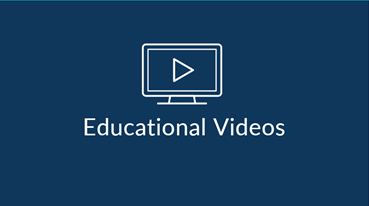Prioritizing debt repayment during retirement
Imagine this – you’ve finally made it to the golden years of retirement. It’s time to enjoy life, but there’s a dark cloud looming over your tranquility: debt. How do you navigate this tricky terrain while preserving peace and financial stability? That’s where prioritizing debt repayment during retirement comes into play.
You may be wondering, “How can I balance paying off my debts without depleting my hard-earned nest egg?” or “Which should I prioritize – credit card bills or mortgage payments?”
These questions can feel overwhelming, but don’t worry. Just as every successful climb starts with one solid step forward, tackling your debt is manageable when broken down into bite-sized pieces.
We’re going to clear things up for you in this guide.
Table of Contents:
- How do you manage debt when retiring?
- Is it smart to use retirement savings to pay off debt?
- Is it better to be debt-free in retirement?
- What 3 things should be paid off before retirement?
Understanding the Importance of Prioritizing Debt Repayment during Retirement
The decision to focus on debt repayment during retirement isn’t a light one. It is essential to prioritize protecting one’s retirement savings and ensuring financial stability in the future. But why is this so essential?
First, let’s tackle credit card debts. These pesky liabilities can be a major drain on your finances due to high interest rates.
Balancing Debt Repayment and Retirement Goals
Paying off debts such as credit cards or student loans might seem like an uphill battle when you’re also trying to build up an emergency fund for retirement. However, it doesn’t have to be a zero-sum game.
Your goal should not just be making monthly payments but reducing the overall debt balance as well. This approach helps in two ways: you pay less in interest over time, freeing up more money for other financial goals; and secondly, being free from monthly payment obligations increases your disposable income in retirement.
Data shows that 1 out of every 6 retirees carries some form of debt into their golden years which has an impact on their living expenses. By focusing now on prioritizing debt repayments, we give ourselves breathing room later down the line – literally buying peace of mind.
Strategies for Prioritizing Debt Repayment during Retirement
Paying off debt in retirement can be tricky, but with the right strategy, it’s doable. The key is to find a balance between making monthly payments on your credit card debts and other loans while also maintaining enough funds for living expenses.
Maximizing Your Monthly Debt Payments
A smart approach is maximizing your monthly debt payments. This might mean finding ways to increase income or reduce spending.
The snowball method involves paying more towards the smallest debt first while making minimum payments on others. As each small loan gets paid off, roll that payment into the next smallest one – like a snowball gathering momentum.
On the other hand, if high-interest rates are burdening you more than multiple debts are stressing you out, then consider using the avalanche method instead of focusing on those higher rate debts first.
If neither feels comfortable for you due to heavy burdens from larger student loans or payday loans, consider consulting with a certified financial planner. They may help clarify what will work best given your unique situation.
- Snowball Method: Focuses on eliminating smaller debts first before moving onto bigger ones. Great way to build momentum and feel accomplished as each debt disappears.
- Avalanche Method: Targets high-interest-rate-debts initially helping save money over time by reducing total interest paid.
- Certified Financial Planner Consultation: Personalized advice based on an analysis of all aspects of one’s finances including potential tax implications.
Don’t forget, your strategy should align with your financial situation and goals. Remember to take into account any matching contributions that might be available from an employer for retirement savings – this is essentially free money you don’t want to leave on the table.
Lastly, remember these are strategies for paying off debt during retirement. But if you can, start saving early and aim to step into retirement without any debt. You’ve worked hard your whole life – you deserve a worry-free golden age.
Key Takeaway:
Retiring debt-free can be a challenge, but with the right plan, it’s achievable. Balancing monthly loan payments and living costs is key. Maximizing your repayments by increasing income or cutting spending helps too. Consider the snowball method to tackle smaller debts first or the avalanche approach for high-interest ones. If you’re weighed down by larger loans like student debt, seek help from a certified financial planner who can give personalized advice based on your situation.
Your strategy should fit your finances and aims – don’t overlook any matching contributions from employers towards retirement savings as that’s essentially free cash. Remember these are strategies for retiring without debt; if possible, start saving early so you enter retirement worry-free.
Prioritizing Debt Repayment while Protecting Retirement Savings
Prioritizing debt repayment alongside retirement can be like a tightrope walk. On one side you’ve got debt repayment adding pressure, and on the other is the important need to protect those precious retirement savings. But here’s some good news: striking that delicate balance might not be as tough as you think.
Prioritizing debt repayment doesn’t mean putting your retirement contributions on hold. Rather, it’s about learning how to manage both effectively. The Principal Retirement Wellness Planner can offer valuable insights into this aspect of financial planning.
The Impact of Debt on Your Retirement Account Growth
To understand why we need this balancing act in the first place, consider what unpaid debts do to the health of a growing bank account. Debts gnaw at potential growth opportunities for our retirement funds by eating up money that could have been invested otherwise.
A study revealed alarming statistics: Every $1 of credit card debt carried over monthly during your working years could cost nearly $7 in lost retirement savings due to missed investment opportunities.
Balancing Act – Making It Work
This is where clever strategies come into play. First things first – get clear about all outstanding debts (credit cards or student loans), then rank them according to interest rates and amounts owed. Here comes an important part – focus more resources towards paying off high-interest rate debts like payday loans or credit card debts while making minimum payments towards lower-rate ones such as mortgage payments or student loan balances.
However tempting it may be just concentrating solely on reducing those hefty figures staring back from the bill notices; don’t forget that even modest contributions toward a 401(k) or an IRA can be equally crucial. If your employer offers matching contributions, try to at least contribute enough to take full advantage of this “free money”.
Now let’s not overlook the importance of maintaining a robust emergency fund – you never know when life might throw a curveball. Consider consulting with a certified financial planner who can provide personalized advice based on your unique circumstances.
Takeaways
Key Takeaway:
Debt Repayment and Retirement Balance: It’s not about choosing between paying off debt or saving for retirement. Rather, it’s about learning to manage both effectively. Prioritize high-interest debts while making minimum payments on lower-rate ones. Don’t neglect modest contributions to your 401(k) or IRA – especially if there’s employer matching involved. Keep an emergency fund ready, and consider personalized advice from a financial planner.
Tips for Accelerating Debt Repayment during Retirement
Retirement is a time to relax, not stress over debts. So let’s dive into how you can speed up your debt repayment process.
The first tip: try increasing your monthly debt payments if you’re able to. A little extra towards your card debts or student loans each month can shave years off the payback period. For example, instead of making minimum payments on credit cards, consider paying more than the required amount. This helps reduce both principal and interest faster which in turn lowers overall balance owed.
Budgeting tools can by giving clear visibility into where every dollar goes so you feel comfortable with ramping up repayments without jeopardizing living expenses.
Leverage Windfalls Wisely
A tax refund or an unexpected inheritance could be used to make substantial progress toward eliminating high-rate card debts that often erode retirement savings quickly. This is because credit cards have their high-interest rates compared to other types of debt like mortgages or student loans.
Rethink Your Loans
Consider current interest rates and fees associated with refinancing or consolidating your loan balances. This approach might save money long-term as well as simplify monthly budget management by having just one payment versus several different ones.
Here are some options to explore for managing those pesky payday loans and credit card debts.
Mindful Spending & Saving
Incorporating mindful spending habits along with consistent saving strategies will help you become free from financial obligations quicker while also protecting your retirement fund. An emergency savings account is a must to prevent new debts from cropping up when unexpected expenses occur.
Remember, every step towards paying off debt helps boost your credit score and moves you closer to enjoying the freedom of a debt-free retirement.
A Professional Touch
If things get tough or complex, don’t hesitate to seek help from certified financial planners who can guide you through prioritizing debt repayments while also ensuring that your retirement savings are on track.
Key Takeaway:
Speeding up debt repayment in retirement doesn’t have to be stressful. Boost monthly payments where possible and use budget tools for clear money tracking. Make the most of windfalls by targeting high-rate debts first. Consolidating loans might simplify your finances and mindful spending plus saving helps secure a comfortable future. If it’s all too much, don’t shy away from asking financial planners for help.
The Difference between Good Debt and Bad Debt in Retirement
When we talk about debt, especially in the context of retirement, it’s crucial to understand there are two types: good debt and bad debt. Both have a significant impact on your credit score, but they’re not created equal.
Balancing the Benefits of Good Debt with the Need for a Debt-Free Retirement
“Good” debts can actually help you build wealth over time because they involve investing in something that will grow in value or generate income. Think mortgages or student loans—these might feel burdensome now but could pay off later.
Conversely, debts like credit card balances that don’t offer any long-term advantages can be detrimental to your financial resources. These high-interest obligations can eat away at your retirement savings if not managed wisely.
The trick is leveraging good debts while striving towards becoming debt-free. For instance, maintaining mortgage payments during retirement might be beneficial due to tax implications and potential appreciation of property values over time. However, carrying substantial credit card balances into this period should generally be avoided due to their higher interest rates which hinder financial growth.
- Mortgages (considered as ‘good’ debt) can offer tax breaks as home equity increases.
- Credit Card Debts (‘bad’ debt), however with no returns coupled with high interest rates makes them undesirable.
According to recent research findings retirees who carry heavy “’bad” debts often face stress affecting their overall well-being.
Thus recognizing these differences helps us make smarter decisions when prioritizing our debt repayments during retirement. After all, understanding your debt is the first step to overcoming it.
Seeking Professional Advice for Debt Repayment during Retirement
You may wonder if you should focus on your credit card debts, student loans, or perhaps that pesky mortgage payment that’s still hanging around. The good news is, professional help is available.
Certified financial planners (CFPs) are pros at helping retirees navigate these tricky waters. They offer personalized advice tailored to your unique situation – from tackling various types of debts to considering long-term implications like potential social security benefits or tax considerations when tapping into retirement funds early. So if you prefer expert guidance for these critical decisions, a CFP could be just what you need.
The Long-Term Financial Benefits of Prioritizing Debt Repayment during Retirement
Retirement is a time for relaxation and enjoyment, but the shadow of debt can dampen this period. Paying off debts like credit cards, student loans, or even mortgage payments may seem daunting when you’re living on a fixed income from your retirement fund and social security benefits.
Prioritizing debt repayment in your golden years has multiple long-term financial advantages that might not be immediately apparent. Let’s start with the potential for higher returns by eliminating debt. The interest saved by paying down high rate debts such as credit card balances often outweighs any return you could get from investing those funds elsewhere.
This strategy doesn’t just help grow your nest egg faster; it also reduces financial stress significantly, leading to improved overall well-being. Being burdened by monthly payment obligations during what should be carefree years can lead to unnecessary anxiety and strain on mental health.
Becoming debt-free gives retirees more flexibility with their finances too. Money previously tied up in meeting minimum payments towards bad debts like payday loans can now go into an emergency fund or cover unexpected expenses without causing panic or resorting to further borrowing.
Making Smart Choices: Good Debt vs Bad Debt
In contrast, “good” debts are generally considered beneficial because they come at low-interest rates and offer some form of tax benefit – think mortgages or student loan balances under certain conditions. These types of loans need careful management rather than aggressive pay-down strategies used for “bad” debts.
A certified financial planner can guide you on this nuanced approach.
With a carefully crafted debt repayment strategy, your retirement savings could yield higher returns. Paying off bad debts as soon as possible and judiciously managing good ones may lead to financial freedom sooner than expected.
Achieving Financial Freedom
The goal is not just about clearing balances; it’s about living a financially secure life in retirement. With less bills to pay each month you can spend your cash as you wish – whether that’s going on trips, learning new activities or just being secure in the knowledge that your finances are all sorted.
Key Takeaway:
Paying off debts during retirement not only offers financial benefits, like potential higher returns and increased savings but also reduces stress for more enjoyable golden years. Being debt-free allows you to allocate money towards an emergency fund or unexpected expenses instead of minimum payments. It’s all about making smart choices: tackle “bad” debts head-on and manage “good” ones wisely with the help of a certified financial planner. This strategy isn’t just about clearing balances; it’s about achieving true financial freedom in your retirement.
FAQs in Relation to Prioritizing Debt Repayment During Retirement
How do you manage debt when retiring?
To handle debt in retirement, prioritize paying off high-interest debts first. Create a budget to monitor spending and maximize repayments.
Is it smart to use retirement savings to pay off debt?
Tapping into your nest egg early can lead to penalties and less income for later years. So it’s usually not the best idea unless absolutely necessary.
Is it better to be debt-free in retirement?
It certainly provides peace of mind, but it can’t come at the cost of making you “asset poor”. Paying off debt from cash flow prior to retirement is often the best solution. Taking out large withdrawals from your nest egg to pay down debt as you enter retirement can be risky. Careful evaluate your options prior to following through on the latter.
What 3 things should be paid off before retirement?
You should aim to clear out high-interest credit card debts, student loans, and mortgages prior to stepping into your well-earned rest period.
Conclusion
Wrapping up, we’ve explored the ins and outs of prioritizing debt repayment during retirement. It’s a balancing act, yes. But it’s doable.
We delved into strategies like the snowball and avalanche methods to make that mountain of debt seem less intimidating.
We discussed how to maximize monthly payments without endangering your nest egg or living expenses. Remember – every dollar counts towards your freedom from debts!
The difference between good debt and bad? We clarified that too! The aim is not just eliminating all debts but managing them smartly for your financial health.
Professional advice can be priceless when navigating this complex terrain. Don’t shy away from consulting a professional if needed.
Prioritizing debt repayment during retirement might feel daunting but remember – each step you take reduces stress while enhancing overall well-being in the golden years of life.












